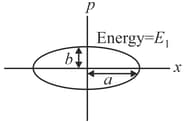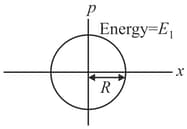The function, represents S.H.M.,

Important Questions on Simple Harmonic Motion
A uniform rod of length and mass is pivoted at the centre. Its two ends are attached to two springs of equal spring constants . The springs are fixed to rigid supports as shown in the figure and the rod is free to oscillate in the horizontal plane. The rod is gently pushed through a small angle in one direction and released. The frequency of oscillation is,
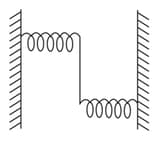
The mass shown in the figure oscillates in simple harmonic motion with amplitude . The amplitude of the point is,

A metal rod of length and mass is pivoted at one end. A thin disk of mass and radius () is attached at its centre to the free end of the rod. Consider two ways the disc is attached:
(Case ): The disc is not free to rotate about its centre and
(Case ): the disc is free to rotate about its centre.
The rod- disc system performs SHM in vertical plane after being released from the same displaced position. Which of the following statement(s) is (are) true?
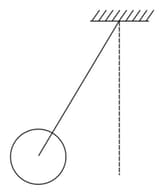
Consider the spring-mass system with the mass submerged in water as shown in the figure. The phase space diagram for one cycle of this system is,
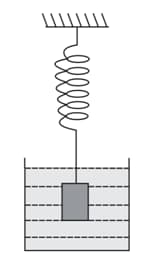
A small block is connected to one end of a massless spring of un-stretched length . The other end of the spring (see the figure) is fixed. The system lies on a horizontal frictionless surface. The block is stretched by and released from rest at . It then executes simple harmonic motion with angular frequency, . Simultaneously, at , a small pebble is projected with speed from point at an angle of as shown in the figure. The point is at a horizontal distance of from . If the pebble hits the block at , the value of is (take, ),
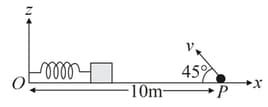
Two independent harmonic oscillators of equal masses oscillate about the origin with angular frequencies and and have total energies and , respectively. The variations of their momenta with positions are shown in figures. If and , then the correct equation(s) is (are),
